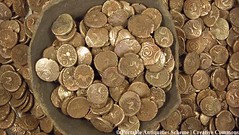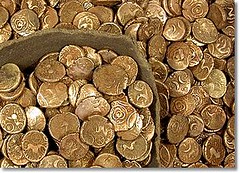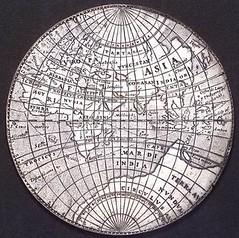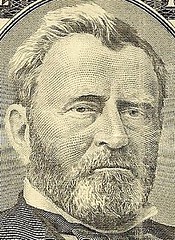
PREV ARTICLE
NEXT ARTICLE
FULL ISSUE
PREV FULL ISSUE
NOTES FROM E-SYLUM READERS: MAY 23, 2010Tom DeLorey writes:
I am not in a position to say if it was an original or an early copy. I can only vouchsafe that I was impressed by it. The exhibit notes credit it to 1581. Eagle-eyed Georges Depeyrot writes: In the last issue, there is a small problem with the photo of the Macedonia coin hoard. It seems that the journalist used a hoard from the UK to illustrate a story.


The "Macedonian" hoard. The Suffolk hoard
Georges supplied links to two articles on a hoard of Iron Age gold found in Suffolk.
-Editor
Bob Leonard spotted this, too. He writes: The illustration accompanying this story is of an ancient Celtic gold coin hoard from Britain, as the "Copyright Portable Antiquities Scheme" cutline suggests. So these coins are not Byzantine and they were not found in Macedonia. (The original story is unillustrated.) It appears from this story that the 13th-century Byzantine coins in the hoard were gold, while the Venetian coins were silver (the Venetian gold ducat was not placed in circulation until 1285, late in the century), though one has to read to the penultimate paragraph for this to be clear. Despite the descriptions in the article, both series have very similar designs, with ruler and saint on one side and Christ or the Virgin on the other. To read the earlier E-Sylum article, see: LARGEST BYZANTINE COIN HOARD UNCOVERED IN MACEDONIA (www.coinbooks.org/esylum_v13n20a33.html) Regarding the resolution of Galena, IL against removing U.S. Grant from the $50 bill, Jeff Starck of Sidney, OH writes:
During the 1850s, Grant lived at White Haven with wife Julia Dent Grant, the estate being of the Dent family. These were hard times for the Grants, and ultimately after about six tough years in St. Louis, the Grants moved to Galena in 1860.
To read the earlier E-Sylum article, see: HOMETOWN OF U.S. GRANT LOBBIES TO KEEP HIM ON $50 BILL (www.coinbooks.org/esylum_v13n20a32.html) Leon Saryan writes: I think NGC is being a bit disingenuous about their ability to penetrate surface plating on a coin using XRF. If I understand their method correctly, it is totally non destructive but does not tell us about the alloy composition of the interior of the coin. Their method will provide an analysis of the surface layer only, perhaps only a few atoms deep at most. To read the earlier E-Sylum article, see: NGC LAUNCHES NEW METALLURGIC ANALYSIS SERVICE (www.coinbooks.org/esylum_v13n20a36.html) Leon adds: I too recall the "Dorian Gray" episode where he pulls out the coin cabinet and studies each piece intently. It is perhaps unique in cinema to see numismatic activity portrayed in such a fashion.
To read the earlier E-Sylum article, see:
THE PICTURE OF DORIAN GRAY, NUMISMATIST
(www.coinbooks.org/esylum_v13n20a27.html)
The Numismatic Bibliomania Society is a non-profit organization promoting numismatic literature. See our web site at coinbooks.org. To submit items for publication in The E-Sylum, write to the Editor at this address: whomren@gmail.com To subscribe go to: https://my.binhost.com/lists/listinfo/esylum All Rights Reserved. NBS Home Page Contact the NBS webmaster 
|

